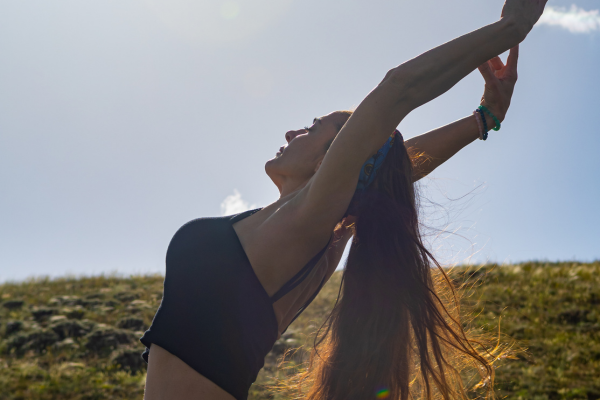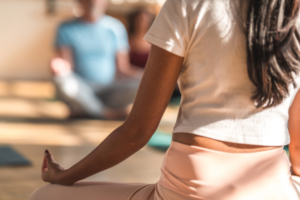Introduction
The idea of mindfulness often conjures images of stillness, silence, and introspection. However, mindfulness is not confined to quiet meditation sessions; it can be brought into everyday actions and movements as well. This article explores how to incorporate mindful movement into your daily routine, turning ordinary activities into opportunities for mindfulness and connection.
1. What is Mindful Movement?
Mindful movement is a form of mindfulness where we bring our full attention to the experience of moving. This could include any form of physical activity, from walking and stretching to more complex movements like dancing or playing a sport.
The aim of mindful movement is not to achieve a particular goal or outcome, but to be fully present in the experience of moving. We tune into the sensations of the body, the rhythm of the breath, and the feeling of the ground beneath us.
Moreover, mindful movement can foster a sense of connection and integration between mind and body. Rather than treating the body as a machine that carries out the mind’s orders, we begin to recognize the body as an integral part of our being, worthy of our attention and care.
2. Mindful Walking
One simple way to incorporate mindful movement into your daily routine is through mindful walking. This can be done during a dedicated walk in nature, on your way to work, or even when moving around your home.
As you walk, bring your attention to the sensations in your feet as they make contact with the ground. Notice the rhythm of your steps, the swinging of your arms, and the feeling of the air on your skin.
Mindful walking can transform an ordinary activity into a calming and grounding practice. It can also foster a deeper connection with your environment, as you become more aware of your surroundings and the interplay between your body and the world around you.
3. Mindful Stretching
Another way to practice mindful movement is through stretching. This can be done as part of a yoga or fitness routine, or simply as a break during your day.
As you stretch, bring your attention to the sensations in your body. Notice the feeling of tension and release, the interplay of strength and flexibility, and the subtle shifts in your balance and alignment.
Mindful stretching can promote physical wellbeing by encouraging you to listen to your body and respect its limits. It can also foster mental wellbeing by providing a moment of calm and focus in the midst of a busy day.
4. Mindful Exercise
Exercise is a natural fit for mindful movement. Whether you enjoy running, swimming, cycling, or weightlifting, you can turn your workout into a mindfulness practice.
As you exercise, try to stay present with the experience of moving. Notice the rhythm of your breath, the feeling of exertion, and the sense of vitality in your body.
Mindful exercise can enhance your enjoyment and performance by helping you tune into your body’s signals and respond more effectively. It can also foster a healthier relationship with exercise, transforming it from a chore or a means to an end into an end in itself, a celebration of movement and life.
5. Mindful Household Chores
Even household chores can be turned into mindful movement practices. Whether you’re washing dishes, vacuuming, or folding laundry, you can use these activities as opportunities to be present and connected.
As you engage in these tasks, bring your attention to the sensations in your body, the rhythm of your movements, and the objects you’re interacting with.
Mindful chores can transform mundane tasks into calming and grounding practices. They can also foster a sense of accomplishment and satisfaction, as you bring care and attention to your surroundings.
6. Mindful Body Language
Our body language is another area where we can practice mindful movement. By becoming more aware of our posture, gestures, and facial expressions, we can communicate more effectively and authentically.
As you interact with others, pay attention to your body language. Notice how it reflects your feelings and attitudes, and how it influences the dynamics of the interaction.
Mindful body language can foster self-awareness and emotional intelligence. It can also enhance our relationships, as we become more attuned to nonverbal cues and more mindful of how we come across to others.
7. Mindful Breathing
Breathing is a form of movement that we’re engaged in all the time, making it an ideal focus for mindfulness practice. Moreover, the breath has a direct impact on our physical and mental state, making it a powerful tool for self-regulation and healing.
As you go about your day, take moments to tune into your breath. Notice the rhythm, depth, and quality of your breathing, and how it changes in response to different situations.
Mindful breathing can foster a sense of calm and focus, helping us navigate stressful situations with more ease and resilience. It can also enhance our health and wellbeing, as we learn to use the breath to support our nervous system and overall balance.
8. Integrating Mindful Movement into Your Life
Incorporating mindful movement into your daily routine doesn’t have to be complicated or time-consuming. You can start with a few minutes a day, and gradually extend the practice as it becomes more natural.
You can also experiment with different forms of mindful movement, and find the ones that resonate with you. Remember, the goal is not to perform perfectly, but to be present and connected.
Moreover, you can use mindful movement as a gateway to a broader mindfulness practice, extending your awareness to your thoughts, feelings, and overall experience of life. In this way, mindful movement can become a stepping stone to greater mindfulness, presence, and wellbeing.
Conclusion
Mindful movement offers a way to integrate mindfulness into our everyday lives, turning ordinary activities into opportunities for presence and connection. Whether we’re walking, stretching, exercising, doing chores, adjusting our body language, or tuning into our breath, we can bring a sense of care, attention, and intentionality to our movements. By incorporating mindful movement into our daily routine, we can enhance our physical and mental wellbeing, deepen our connection with ourselves and the world around us, and transform our experience of life.



